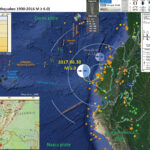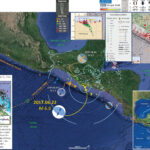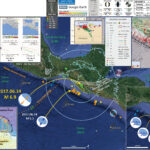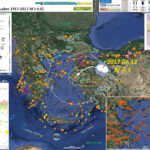Earlier today there was a moderate sized earthquake (M 6.0) along coast of Ecuador. This earthquake happened in the region of the 2016.04.16 M 7.8 subduction zone earthquake. Based upon the depth and our knowledge of this region, this earthquake…
Earthquake Report: Guatemala
This morning we had an earthquake offshore of Guatemala with a magnitude M = 6.8. Here is the USGS website for this earthquake. This earthquake occurred to the east of a sequence from about a week ago. Here is my…
Earthquake Report: Guatemala
There was a fascinating earthquake sequence a few days ago on and offshore of Guatemala. Offshore of Guatemala in the Pacific Ocean, the Cocos plate subducts beneath the North America and Caribbean plates (NAP & CP). The transform plate boundary…
Earthquake Report: Westernmost Aleutian Arc
This earthquake happened a couple weeks ago, but was interesting and I have been looking forward to following up on this with a report. Here is the USGS website for this M 6.8 earthquake. The M 6.8 earthquake happened in…
Earthquake Report: Turkey!
We had a couple of earthquakes in western Turkey today (in the Aegean Sea offshore of the Island of Lesbos, part of Greece). The M 6.3 earthquake shows evidence for extension (normal fault), based on the moment tensor (read below).…
Earthquake Report: Trinidad, California
Early this morning, I was awakened by a mild jolt. I thought, well, seems like a M 3+- nearby. I did not get out of bed. The main shaking lasted a couple of seconds, though it seemed that there was…




